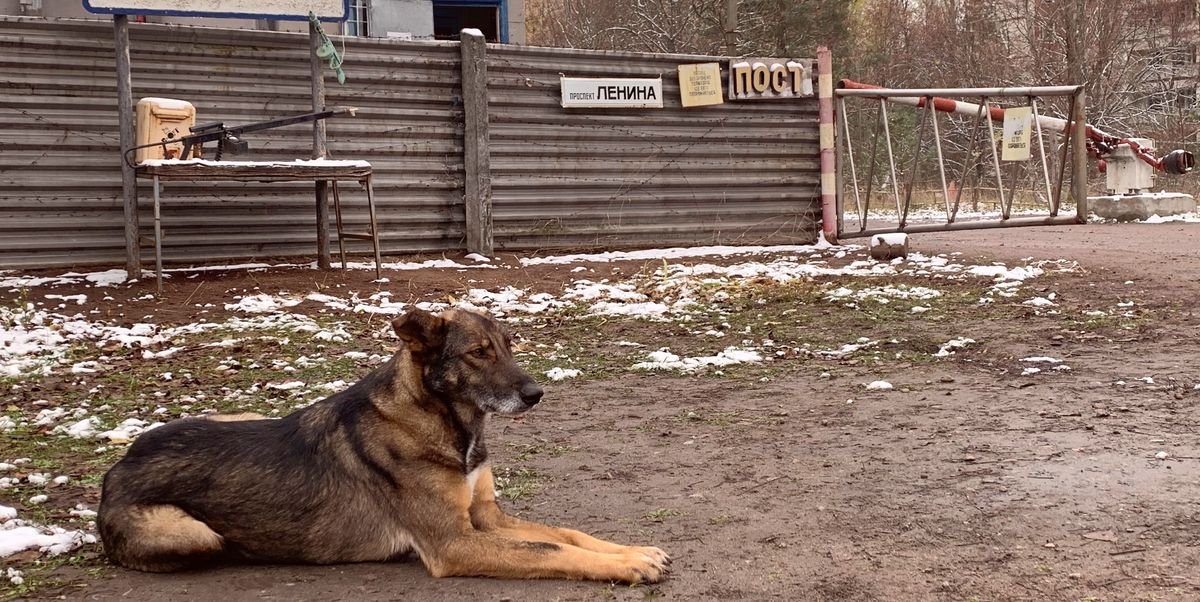In the aftermath of the devastating Chernobyl nuclear disaster in 1986, a 30-kilometer radius around the plant was evacuated, leaving behind a eerie, abandoned landscape. However, amidst the desolation, a surprising phenomenon has emerged – the rapid evolution of the dogs that have made the Exclusion Zone their home.
A recent study published in the journal Science has shed light on the remarkable adaptability of these canine survivors, who have been thriving in the harsh, radioactive environment for over three decades. The research, led by Dr. Elaine Ostrander, a geneticist at the National Human Genome Research Institute, has uncovered the genetic secrets behind the dogs’ remarkable resilience.
A Brief History of the Chernobyl Disaster
To understand the context of the study, it’s essential to revisit the events surrounding the Chernobyl disaster. On April 26, 1986, a safety test gone wrong led to a catastrophic explosion at the Chernobyl Nuclear Power Plant in Ukraine. The accident released massive quantities of radioactive materials, including iodine-131, cesium-137, and strontium-90, into the environment.
The immediate aftermath of the disaster saw the evacuation of over 100,000 people from the surrounding area, leaving behind a vast, uninhabited zone. The Exclusion Zone, as it came to be known, was expected to remain largely devoid of life for centuries to come. However, as the years passed, a surprising phenomenon emerged – the return of wildlife to the area.
The Dogs of Chernobyl: A Story of Survival
Among the first species to recolonize the Exclusion Zone were dogs, many of which were likely descended from pets left behind by the evacuees. These canine survivors faced unimaginable challenges, including radiation exposure, lack of food and shelter, and the ever-present threat of other predators.
Despite these obstacles, the dogs adapted, and their population began to thrive. Today, estimates suggest that over 1,000 dogs inhabit the Exclusion Zone, with many more roaming the surrounding areas.
The Science Behind the Dogs’ Survival
So, how did the dogs of Chernobyl manage to survive and thrive in such a hostile environment? The answer lies in their genetics.
The recent study, led by Dr. Ostrander, aimed to uncover the genetic mechanisms behind the dogs’ remarkable adaptability. By analyzing the DNA of 150 dogs from the Exclusion Zone, the researchers identified several key genetic variations that have contributed to the dog’s survival.
One of the most significant findings was the presence of a genetic variant associated with radiation resistance. This variant, known as the “radiation-resistant” allele, was found to be more common in dogs from the Exclusion Zone than in dogs from other areas.
The study also revealed that the Chernobyl dogs have undergone significant genetic changes in response to their environment.
For example, the researchers found that the dogs have evolved to have:
– Stronger immune systems: The dogs have developed more efficient immune systems, which helps them cope with the radiation and other environmental stressors.
– Increased resistance to radiation: The dogs have developed a unique genetic variation that makes them more resistant to radiation.
– Changes in their physiology: The dogs have undergone changes in their physiology, including changes in their metabolism, digestion, and reproduction.
Rapid Evolution in Action
The study’s findings provide a fascinating glimpse into the rapid evolution of the Chernobyl dogs. By analyzing the genetic data, the researchers were able to reconstruct the dogs’ evolutionary history, revealing a remarkable story of adaptation and survival.
One of the most striking aspects of the study is the speed at which the dogs have evolved. In just a few decades, the Chernobyl dogs have undergone significant genetic changes, allowing them to thrive in one of the most hostile environments on Earth.
Implications for Conservation and Research
The study’s findings have significant implications for conservation and research efforts. By understanding the genetic mechanisms behind the Chernobyl dogs’ adaptability, scientists can gain valuable insights into the evolution of other species in response to environmental stressors.
The study also highlights the importance of preserving the genetic diversity of species in the face of environmental challenges. By protecting and studying the Chernobyl dogs, scientists can gain a deeper understanding of the complex interactions between species and their environments.
Summary
The story of the Chernobyl dogs is a testament to the incredible resilience and adaptability of life on Earth. Through their rapid evolution, these canine survivors have demonstrated an remarkable ability to thrive in even the most hostile environments.
As we continue to face the challenges of environmental degradation and climate change, the study of the Chernobyl dogs offers a valuable lesson in the importance of preserving genetic diversity and understanding the complex interactions between species and their environments.
The dogs of Chernobyl may have begun as a symbol of tragedy and devastation, but they have emerged as a powerful reminder of the incredible adaptability and resilience of life on Earth.
References:
1. “Genomic Analysis of the Chernobyl Dogs Reveals Rapid Evolutionary Adaptation to a Radioactive Environment” (Science, 2022)
https://link.springer.com/article/10.1186/s40575-023-00124-1
2. “Chernobyl Accident 1986”
World Nuclear Association https://world-nuclear.org
3.Environmental Consequences of the Chernobyl Accident and their Remediation, (International Atomic Energy Agency (IAEA))
4. “Radiation Resistance in Dogs: A Review of the Current State of Knowledge
https://newsinhealth.nih.gov/2023/08/dr-elaine-ostrander-nih-s-dog-genome-project-0
5. The dogs of Chernobyl https://pmc.ncbi.nlm.nih.gov/articles/PMC9984172/








